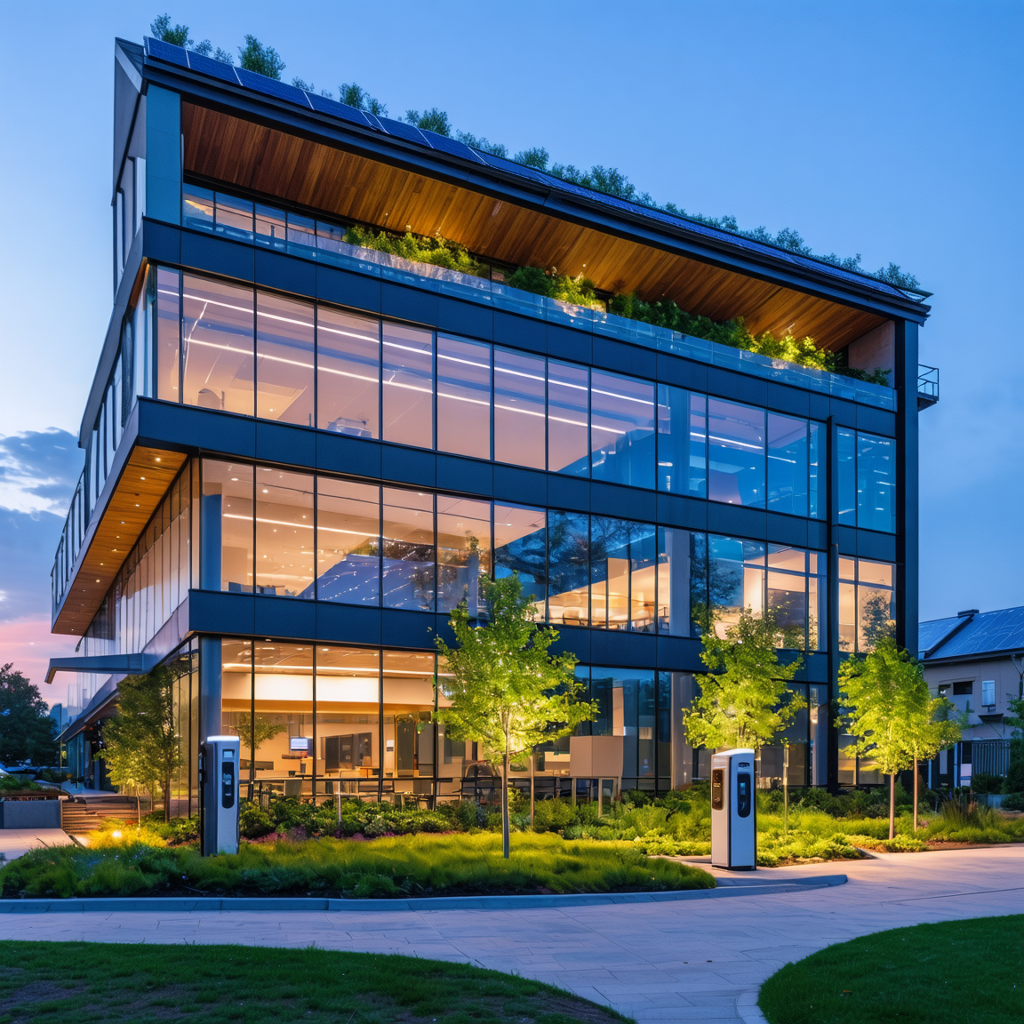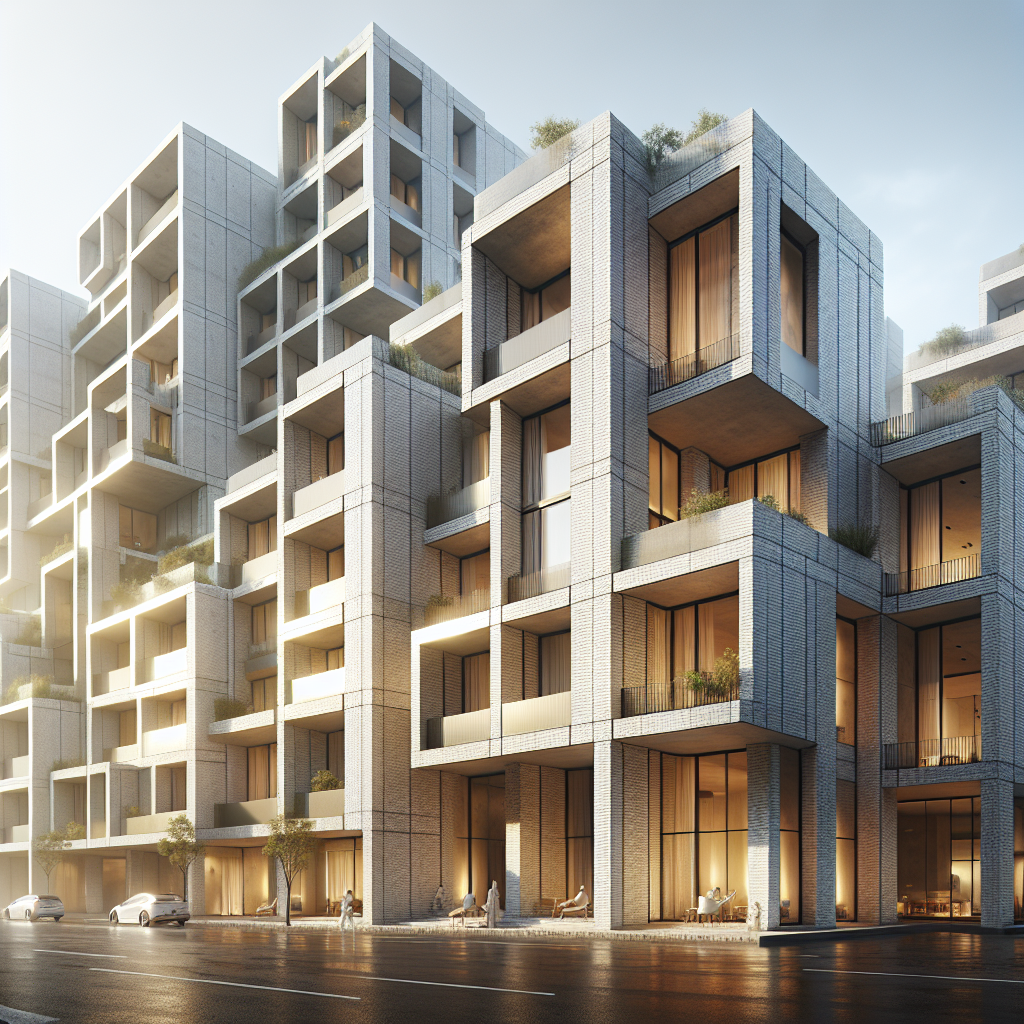Intro To Zero Energy Buildings (ZEB)
Do you ever wonder what the future of sustainable construction looks like?
Here’s a clue: It’s already here, and it’s called Zero Energy Building (ZEB).
A ZEB, or net-zero energy building, is a revolutionary concept in sustainable construction. These buildings are designed to produce as much renewable energy as they consume in a year, balancing out their energy usage and consumption.
In this extensive guide, we are going to explore the fascinating world of ZEBs. We’ll uncover what makes a building a ZEB, how these highly efficient buildings manage to balance their energy consumption, and the key characteristics that set them apart.
We’ll also look at some stunningly successful examples of ZEBs in today’s world.
Ready? Let’s get going.
Table of Contents
Understanding Zero Energy Buildings

Definition of Zero Energy Building
A Zero Energy Building (ZEB), sometimes known as a net-zero energy building, is a structure with zero net energy consumption. This means the total amount of energy used by the building on an annual basis is approximately equal to the amount of renewable energy created on-site.
Key Characteristics of Zero Energy Buildings
- High Energy Efficiency: ZEBs use energy-efficient systems and technologies to minimize energy consumption.
- Renewable Energy Production: They generate energy using renewable sources such as solar panels or wind turbines.
- Energy Balance: Over a year, ZEBs aim for a net-zero energy balance through energy-saving strategies and renewable energy integration.
Energy Efficiency Strategies
Zero Energy Buildings employ several strategies to improve efficiency:
- Insulation: High-quality insulation reduces heat loss/gain.
- Energy-Efficient Windows: Windows with low-emissivity coatings and proper sealing reduce energy loss.
- LED Lighting: LED lights are used for their lower energy consumption and longer lifespan.
- High-Efficiency HVAC Systems: Heating, ventilation, and air conditioning systems designed to use less energy.
Renewable Energy Systems
To achieve a zero energy balance, buildings incorporate various renewable energy systems:
- Solar Panels: Photovoltaic (PV) systems generate electricity from sunlight.
- Wind Turbines: Small-scale wind turbines convert wind energy into electricity.
- Geothermal Systems: Utilize the earth’s stable temperatures for heating and cooling.
Benefits of Zero Energy Buildings
Zero Energy Buildings offer multiple benefits, both environmentally and economically:
- Reduced Carbon Footprint: ZEBs significantly cut greenhouse gas emissions through reduced energy use and renewable energy generation.
- Lower Energy Costs: Over time, ZEBs can result in substantial savings on energy bills.
- Increased Property Value: Energy-efficient properties often have higher market values.
- Better Indoor Air Quality: Systems in ZEBs often promote better ventilation and air quality.
Example of a Zero Energy Building
The Bullitt Center in Seattle, considered one of the greenest commercial buildings globally, showcases many of the principles of ZEBs through its energy-efficient design and extensive use of renewable energy resources.
For further details on Zero Energy Buildings, you can visit this DOE’s official website.
Remember, the aim of ZEBs is to create buildings that are self-sustaining, eco-friendly, and economical over their lifetime.
Designing A Zero Energy Building

Zero Energy Building Design Principles
Zero Energy Buildings are built based on certain design principles which enable the energy-saving process. The right design plays a major role in the energy efficiency of the building.
- Bioclimatic Design: This refers to designing buildings in relation to climatic conditions, with the aim of providing thermal and visual comfort inside the building using natural resources.
- Compact Building Shape: The design minimizes the surface area through which thermal energy can be lost or gained.
Technologies in Zero Energy Buildings
Energy efficient technologies are incorporated into Zero Energy Buildings to make them efficient. Some of these technologies include:
- Energy Recovery Ventilators: These are devices that exchange the energy contained in normally exhausted building or space air and use it to treat (precondition) the incoming outdoor ventilation air in residential and commercial HVAC systems.
- Smart Grid Technology: This allows for the efficient use and distribution of energy sources. It supplies electricity based on demand, thus greatly reducing energy waste.
Challenges of Zero Energy Building
Despite the numerous advantages, there are some challenges faced while creating Zero Energy Buildings:
- High Initial Cost: The initial cost of installing the systems and technologies required for a building to be classified as a ZEB can be high.
- Availability of Renewable Energy Sources: The availability of renewable energy sources can be a challenge, especially in areas where sunlight, wind, or other sources aren’t prevalent.
- Technical Issues: Maintenance and technical issues related to the installed systems can pose a challenge.
Solutions to Zero Energy Building Challenges
While challenges exist, they can be mitigated through various strategies:
- Government Incentives: Governments can provide incentives to offset the initial high costs of constructing ZEBs.
- Energy Storage: To combat the challenges of fluctuating renewable energy sources, energy storage systems can be installed to store excess energy and use it when the renewable energy source is not available.
- Regular Maintenance and Upgrades: Regular maintenance and timely upgrades can mitigate the technical issues related to system failures or inefficiencies.
Future of Zero Energy Buildings
The future of Zero Energy Buildings is promising, with technological advancements making it easier to implement energy-efficient solutions. More standards and regulations are being introduced to promote the adoption of ZEB principles in the construction industry, leading towards a more sustainable future.
What Does It Mean for a Building to be Zero Energy Ready?
Zero Energy Ready Buildings (ZERBs) are an important step toward achieving Zero Energy Building goals. While a Zero Energy Building generates as much renewable energy as it consumes over a year, a Zero Energy Ready Building is designed to achieve net-zero energy consumption but may not yet have renewable energy systems installed. Here’s what you need to know:
Definition of Zero Energy Ready Building
A Zero Energy Ready Building is a high-performance building that meets rigorous energy efficiency standards and is equipped to have renewable energy technologies added in the future. It reaches a level of efficiency so high that retrofitting with renewable energy systems, such as solar panels, will cover its minimal remaining energy needs.
Characteristics of Zero Energy Ready Buildings
- Superior Insulation: Exceptional insulation to minimize energy loss.
- High-Performance Windows: Use of advanced windows that reduce heat transfer.
- Advanced HVAC Systems: State-of-the-art HVAC systems optimized for low energy use.
- Solar-Ready Design: Structurally and electrically prepared for easy installation of solar panels.
Importance of Zero Energy Ready Buildings
- Future-Proof Investment: By building to zero energy ready standards, homeowners can easily transition to ZEB in the future as renewable energy becomes more affordable and widespread.
- Enhanced Indoor Environment: With better insulation and airtightness, these buildings offer improved indoor air quality and thermal comfort.
- Sustainability: They significantly cut energy consumption and carbon footprint even before incorporating renewable energy systems.
Comparing Zero Energy Ready and Zero Energy Buildings
| Feature | Zero Energy Building (ZEB) | Zero Energy Ready Building (ZERB) |
|---|---|---|
| Energy Consumption | Net-zero annually | Extremely low, almost net-zero |
| Renewable Energy Systems | Installed and operational | Prepped for future installation |
| Initial Cost | Higher due to renewable systems | Moderate; potential for gradual upgrades |
Technologies and Strategies for Zero Energy Ready Buildings
- High-Efficiency Appliances: Utilization of ENERGY STAR-rated appliances to reduce energy use.
- Heat Recovery Ventilation: HRV systems reclaim heat from exhausted air to pre-heat incoming fresh air.
- Advanced Framing Techniques: Design methods that optimize material use and reduce thermal bridging.
Benefits of Building Zero Energy Ready
- Cost Savings: Lower energy bills due to high efficiency and easier transition to full ZEB status.
- Marketability: Increasing demand for energy-efficient homes makes ZERBs attractive in the real estate market.
- Resilience: Better performance under extreme weather conditions enhances durability and reliability.
For more detailed insights on zero energy readiness, you can explore this Energy Department resource.
Zero Energy Building Standards
Zero Energy Building Standards aim to create high-performance buildings that balance energy consumption with renewable energy production. These standards set the framework for design, construction, and operation practices that ensure buildings achieve net-zero energy usage.
- Energy Performance Criteria: Standards focus on minimizing energy demand through efficiency measures and covering the remaining demand with renewable energy.
- Envelope Requirements: High insulation values, advanced windows, and airtight constructions minimize energy losses.
- Systems Efficiency: Buildings must use highly efficient HVAC, lighting, and other electrical systems to meet the standards.
- Renewable Energy Integration: On-site renewable energy systems, such as solar photovoltaics, are crucial components.
Zero Energy Building Certifications
Several certifications help ensure buildings meet zero energy standards:
- LEED Zero Certification: From the U.S. Green Building Council (USGBC), it recognizes buildings with net-zero energy performance.
- Living Building Challenge: Administered by the International Living Future Institute (ILFI), it requires buildings to produce all energy through renewables.
- Passivhaus Standard: Although primarily focused on energy efficiency, achieving Passivhaus certification is a step towards zero energy status.
Global Examples of Zero Energy Standards
Different countries have adopted or are developing zero energy standards to promote sustainable construction.
- European Union: EU Directive 2010/31/EU mandates all new buildings to be nearly zero-energy buildings (NZEB) by the end of 2020 (public sector) and 2021 (all buildings).
- California: The state’s Building Energy Efficiency Standards aim for all new residential construction to achieve zero net energy by 2020 and commercial construction by 2030.
- Japan: The ZEB Roadmap aims to advance zero energy buildings, promoting technologies like heat pump water heaters, high-performance insulation, and solar power generation.
Advanced Insulation Techniques
Advanced insulation techniques are critical for the energy efficiency of Zero Energy Buildings:
- SIP Panels: Structural Insulated Panels (SIPs) provide excellent thermal insulation and structural strength.
- Vacuum Insulation Panels (VIPs): These offer high thermal resistance in thinner profiles, ideal for retrofitting.
- Spray Foam Insulation: It forms a continuous barrier, filling gaps and crevices to prevent air leaks.
Emerging Trends in Zero Energy Buildings
Technological advancements and innovative practices are shaping the future of Zero Energy Buildings:
- Building-Integrated Photovoltaics (BIPV): Solar cells integrated into building materials like windows and facades, combining functionality with aesthetics.
- Smart Building Systems: Internet of Things (IoT) devices and intelligent controls optimize energy use in real-time based on occupancy and usage patterns.
- Energy-Positive Buildings: Emerging designs aim for buildings to produce more energy than they consume, potentially selling excess back to the grid.
For additional insights into these building standards and their implementation, you can explore information from the U.S. Department of Energy’s Building Energy Codes Program.
In Closing: Zero ENergy Buildings
In conclusion, Zero Energy Buildings present an innovative solution in the quest for sustainability and energy efficiency in the built environment.
By balancing energy consumption and renewable energy production, these buildings aim to decrease environmental impact and offer economic benefits over their lifespan. Similarly, Zero Energy Ready Buildings form a stepping stone towards fully achieving zero energy status, making it practical and manageable for homeowners and developers.
The initial investment required, for both Zero Energy and Zero Energy Ready buildings, may be significant due to the integration of advanced technologies and design principles. However, this cost is often offset over time through energy savings, potential government incentives, and an increase in property value.
As technology advances and becomes more widely adopted, the accessible and affordable nature of zero energy design is likely to increase.
Frequently Asked Questions – FAQs
What is a Zero Energy Building?
A Zero Energy Building (ZEB) is a property that achieves net-zero energy consumption annually, implying that the total amount of renewable energy it produces balances out the amount it uses.
How do Zero Energy Buildings achieve high energy efficiency?
These buildings employ various strategies, such as high-quality insulation, energy-efficient windows, LED lights, and high-efficiency HVAC systems, to minimize energy usage. Further, renewable energy systems like solar panels, wind turbines, and geothermal systems are utilized to generate energy.
What is the difference between Zero Energy and Zero Energy Ready Buildings?
While Zero Energy Buildings generate as much energy as they use, Zero Energy Ready Buildings are prepped and designed to attain this balance. Although they may not yet have renewable energy systems operational, they meet high energy efficiency standards, making their transition to a full-fledged ZEB easier in future.
What challenges can occur during the implementation of Zero Energy Buildings?
Some of the challenges include high initial costs of systems and technologies, availability of renewable energy sources, and issues related to maintenance and technical handling of installed systems.
How can these challenges be mitigated?
Strategies like government incentives, energy storage systems, and regular maintenance and upgrades can help overcome the issues associated with the implementation of Zero Energy Buildings.






